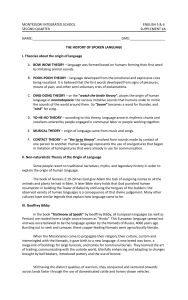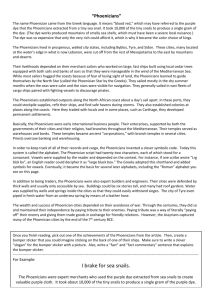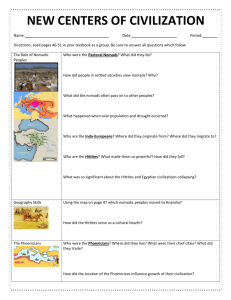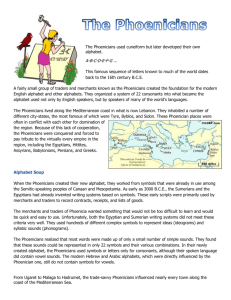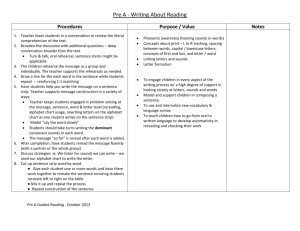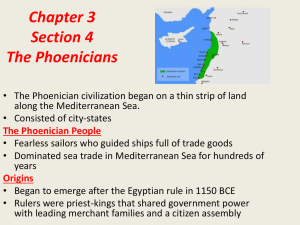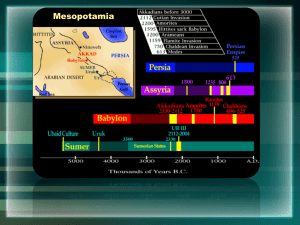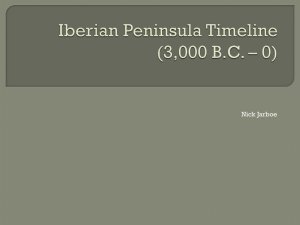The Story of Writing Lately I have been telling you stories about the
advertisement
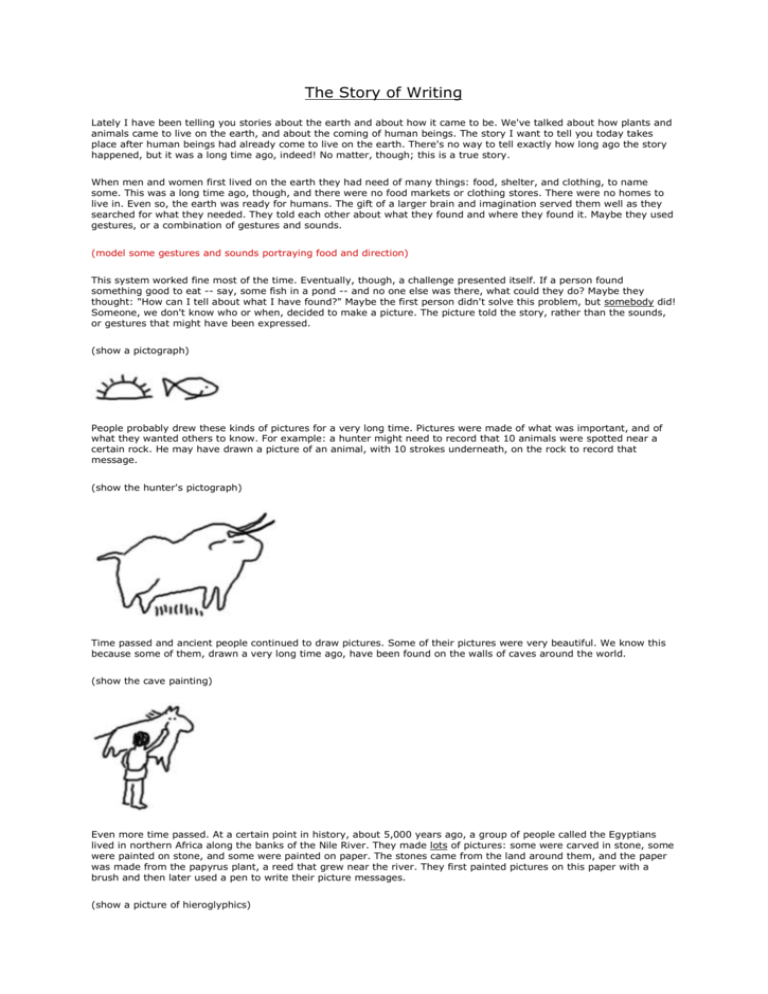
The Story of Writing Lately I have been telling you stories about the earth and about how it came to be. We've talked about how plants and animals came to live on the earth, and about the coming of human beings. The story I want to tell you today takes place after human beings had already come to live on the earth. There's no way to tell exactly how long ago the story happened, but it was a long time ago, indeed! No matter, though; this is a true story. When men and women first lived on the earth they had need of many things: food, shelter, and clothing, to name some. This was a long time ago, though, and there were no food markets or clothing stores. There were no homes to live in. Even so, the earth was ready for humans. The gift of a larger brain and imagination served them well as they searched for what they needed. They told each other about what they found and where they found it. Maybe they used gestures, or a combination of gestures and sounds. (model some gestures and sounds portraying food and direction) This system worked fine most of the time. Eventually, though, a challenge presented itself. If a person found something good to eat -- say, some fish in a pond -- and no one else was there, what could they do? Maybe they thought: "How can I tell about what I have found?" Maybe the first person didn't solve this problem, but somebody did! Someone, we don't know who or when, decided to make a picture. The picture told the story, rather than the sounds, or gestures that might have been expressed. (show a pictograph) People probably drew these kinds of pictures for a very long time. Pictures were made of what was important, and of what they wanted others to know. For example: a hunter might need to record that 10 animals were spotted near a certain rock. He may have drawn a picture of an animal, with 10 strokes underneath, on the rock to record that message. (show the hunter's pictograph) Time passed and ancient people continued to draw pictures. Some of their pictures were very beautiful. We know this because some of them, drawn a very long time ago, have been found on the walls of caves around the world. (show the cave painting) Even more time passed. At a certain point in history, about 5,000 years ago, a group of people called the Egyptians lived in northern Africa along the banks of the Nile River. They made lots of pictures: some were carved in stone, some were painted on stone, and some were painted on paper. The stones came from the land around them, and the paper was made from the papyrus plant, a reed that grew near the river. They first painted pictures on this paper with a brush and then later used a pen to write their picture messages. (show a picture of hieroglyphics) As you might imagine, people were sometimes confused by picture messages. This was especially true when people started using the same pictures for different meanings, as the Egyptians did. For example, a picture of a leg could mean: 1. The object, meaning an actual leg 2. An idea, meaning 'to run', because the leg was used for running. 3. The tone of the words, as in 'quickly' (show pictures of different types of hieroglyphics) At about the same time in history, a people called the Phoenicians lived around the Mediterranean Sea, north of Africa. They sailed to lands around the Mediterranean and sold many things - ivory, spices, incense, silver, ornaments, glass and one very, very special thing. Only the Phoenicians sold this one special thing. What was it? It was a rare purple dye, like we use to color cloth. Somehow they discovered that a particular shellfish contained in its shell a tiny particle of bright red coloring that they could use as a dye. These shellfish were gathered by the millions and crushed together to make the dye. Because it was hard to get -- only the Phoeenicians had it -- the dye was very expensive. Only royalty and the very wealthy were able to dye their clothes with this beautiful color. The Phoenicians were the discoverers of this dye: how it was made was a closely guarded secret. But as important as this Tyrian Purple Dye was to the Phoenicians, it is not why they are part of this story. Here is the reason why: The Phoenicians traded with the Egyptians, who by now used pictures that represented sounds as well as objects. Being merchants, the Phoenicians needed a quick and accurate way of recording their business, so they 'borrowed' (quite cleverly) just the sound pictures of the Egyptians. This sort of picture could express many different things, like ideas and amounts of money. Best of all, ithese symbols made it easier to tell what was meant, since people who spoke to each other by this time agreed that certain sounds meant certain things. The Phoenicians found out what you found out when you learned to use the sandpaper letters -- this mark makes this sound. (show pictures of the Phoenician alphabet) Even though it was the Phoenicians who were the first to use what we know as the alphabet, you might not recognize their letters. So, this is not quite the end of the story. You see, it was the Romans who first called these letters 'the alphabet'. The Roman letters are ones you might recognize. The sandpaper letters you learned are almost the same as the letters used by the Romans. (show pictures of the Greek, Roman, and modern alphabet) Remember when I was reading name of book here to you the other day? It is the Phoenicians who first invented the idea of writing only sounds on paper. They did not need to draw pictures of objects, only the marks for sounds. People today still use this idea. When you write down a story, you write down the letters that make the sound of the word that you want to write. And when you read, you recognize the sounds that the alphabet letters make. Because the Phoenicians recognized the sound alphabet, the author of name of book just read. This is the Story of Writing. here could write the book we
